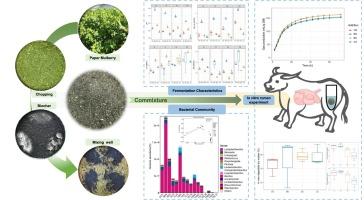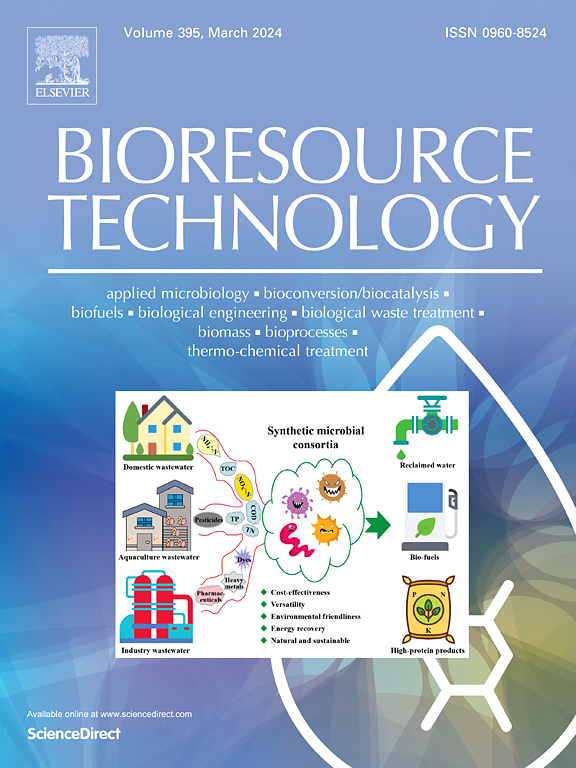Game changer for anaerobic fermentation of paper mulberry: Sucrose-loaded biochar enhancing microbial communities and lactic acid fermentation
IF 9
1区 环境科学与生态学
Q1 AGRICULTURAL ENGINEERING
引用次数: 0
Abstract
This study investigated biochar effects, either alone or combined with sucrose, on fermentation quality, microbial communities, and in vitro rumen digestion of anaerobic fermented paper mulberry. The biochar alkaline functional groups bind to lactic acid, reducing acid inhibition and promoting Lactiplantibacillus proliferation. Owing to the low sugar content of paper mulberry, lactic acid bacteria in the biochar group primarily underwent heterofermentation, resulting in the lowest lactic and highest acetic acid contents. Treated with sucrose-loaded biochar, the increased substrate supported homofermentation, leading to the highest lactic and lowest acetic acid contents, with a 15.0 % increase in lactic acid and a 22.2 % decrease in ammoniacal nitrogen compared with the control after 75 days. In vitro rumen tests showed that the biochar-sucrose group had the highest dry matter degradation rate (45.9 %) and a 24.2 % reduction in methane emissions. Concludingly, sucrose-loaded biochar is recommended as effective for lactic acid production under anaerobic conditions.

桑纸厌氧发酵的游戏规则改变者:蔗糖负载生物炭能增强微生物群落和乳酸发酵。
本研究调查了生物炭单独或与蔗糖结合对厌氧发酵纸桑椹的发酵质量、微生物群落和体外瘤胃消化的影响。生物炭的碱性官能团与乳酸结合,减少了酸抑制,促进了乳杆菌的增殖。由于纸桑葚含糖量低,生物炭组中的乳酸菌主要进行异发酵,因此乳酸含量最低,醋酸含量最高。与对照组相比,用蔗糖负载生物炭处理 75 天后,增加的基质支持了同发酵,导致乳酸含量最高,醋酸含量最低,乳酸增加了 15.0%,氨态氮减少了 22.2%。体外瘤胃试验表明,生物炭-蔗糖组的干物质降解率最高(45.9%),甲烷排放量减少了 24.2%。总之,建议使用蔗糖生物炭在厌氧条件下有效生产乳酸。
本文章由计算机程序翻译,如有差异,请以英文原文为准。
求助全文
约1分钟内获得全文
求助全文
来源期刊

Bioresource Technology
工程技术-能源与燃料
CiteScore
20.80
自引率
19.30%
发文量
2013
审稿时长
12 days
期刊介绍:
Bioresource Technology publishes original articles, review articles, case studies, and short communications covering the fundamentals, applications, and management of bioresource technology. The journal seeks to advance and disseminate knowledge across various areas related to biomass, biological waste treatment, bioenergy, biotransformations, bioresource systems analysis, and associated conversion or production technologies.
Topics include:
• Biofuels: liquid and gaseous biofuels production, modeling and economics
• Bioprocesses and bioproducts: biocatalysis and fermentations
• Biomass and feedstocks utilization: bioconversion of agro-industrial residues
• Environmental protection: biological waste treatment
• Thermochemical conversion of biomass: combustion, pyrolysis, gasification, catalysis.
 求助内容:
求助内容: 应助结果提醒方式:
应助结果提醒方式:


